Down vs synthetic insulation: which is the most sensible purchase?
Down is nature’s best insulator, but how does it compare to modern synthetic fills? It's time for the battle of the puffers: down vs synthetic insulation
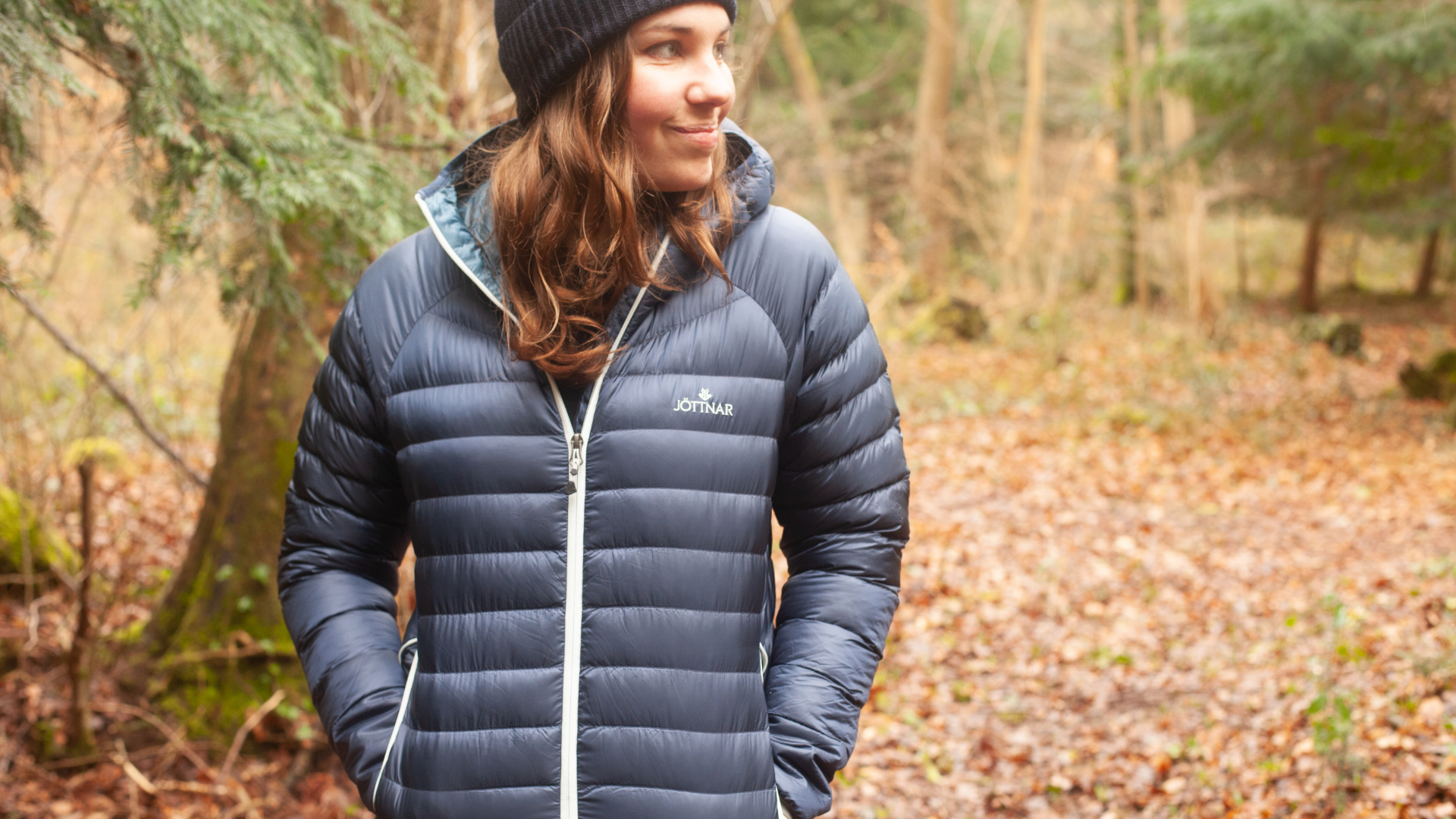
- Down vs synthetic insulation: warmth for weight
- Down vs synthetic insulation: packability
- Down vs synthetic insulation: versatility
- Down vs synthetic insulation: durability
- Down vs synthetic insulation: sustainability and ethical concern
- Down vs synthetic insulation: price
- Comparison table
- Down vs synthetic insulation: the verdict
Anyone who has ever slept in a sleeping bag or worn an insulated hoody will know the insulating power of down or synthetic insulation. These warm sleeping systems and toasty puffies are the very definition of cozy. In the case of insulated jackets, they've become really quite fashionable too. These days, the catwalk is no stranger to a puffer.
The magic happens on the inside, where an insulating material traps air that's then warmed by your radiated body heat. This is what gives a puffer or sleeping bag it's glorious warmth. This material is either down, a natural material taken from ducks or geese, or a synthetic material, usually polyester.
There are some huge pros and cons to each and neither is by any means perfect. This is why choosing between down and synthetic fill can be a difficult decision when it comes to getting that new sleeping bag or down jacket.
To break this decision down, we've decided to arrange a face-off: down vs synthetic insulation. We detail the considerations around value, ethics, performance, weight, packability and durability to help you choose the right kind of fill.
Meet the expert

Matt's love affair with the great outdoors began many years ago and his adventures have led him to becoming one of the UK's foremost hiking and camping gear experts. From his base in Eryri (Snowdonia) National Park, he's got the ideal environment for testing kit.
Today's best deals
Down vs synthetic insulation: warmth for weight
- High-quality down is the best insulator and offers the best warmth to weight
- This is because down is exceedingly light
- The warmth of down depends on its fill power, a measure of how many cubic inches one ounce of down fills

In this regard, there is really only one winner – at least at the top end of the scale. High-quality down remains the best insulator for clothing and sleeping bags. Despite huge technological advances in synthetic fibres, no man-made fill can compare to premium down, which is why down jackets and sleeping bags are still typically the preferred choice for those visiting the coldest places on Earth, from climbers in high-altitude environments to researchers working in polar regions.
It is important to talk about warmth for weight rather than just outright warmth alone, because technically you could make a synthetic jacket that would be just as warm as a premium down jacket. The problem is that it would require so much fill that it would be bulky, awkward and downright uncomfortable to wear – basically, you’d be waddling around like a penguin.
Down, on the other hand, is very light, yet delivers exceptional warmth in relation to its weight. How? The key lies in its composition. Contrary to common belief, down is not made from feathers. Down is actually the soft, fluffy plumage found beneath the feathers of waterfowl like ducks and geese. These super fine, wispy clusters trap air, and it is this trapped warm air that provides down’s exceptional insulating value.
All the latest inspiration, tips and guides to help you plan your next Advnture!
Of course, not all down is equal. The warmth of down depends on its ability to loft, or trap this warm air. This is indicated by fill power (FP), which is a measure of how many cubic inches one ounce of down fills inside a standardised testing device. The fill power of down for outdoor gear typically ranges from about 550 FP (meaning that one ounce of that down fills 550 cubic inches of space) to 900 or occasionally even 1000 FP.
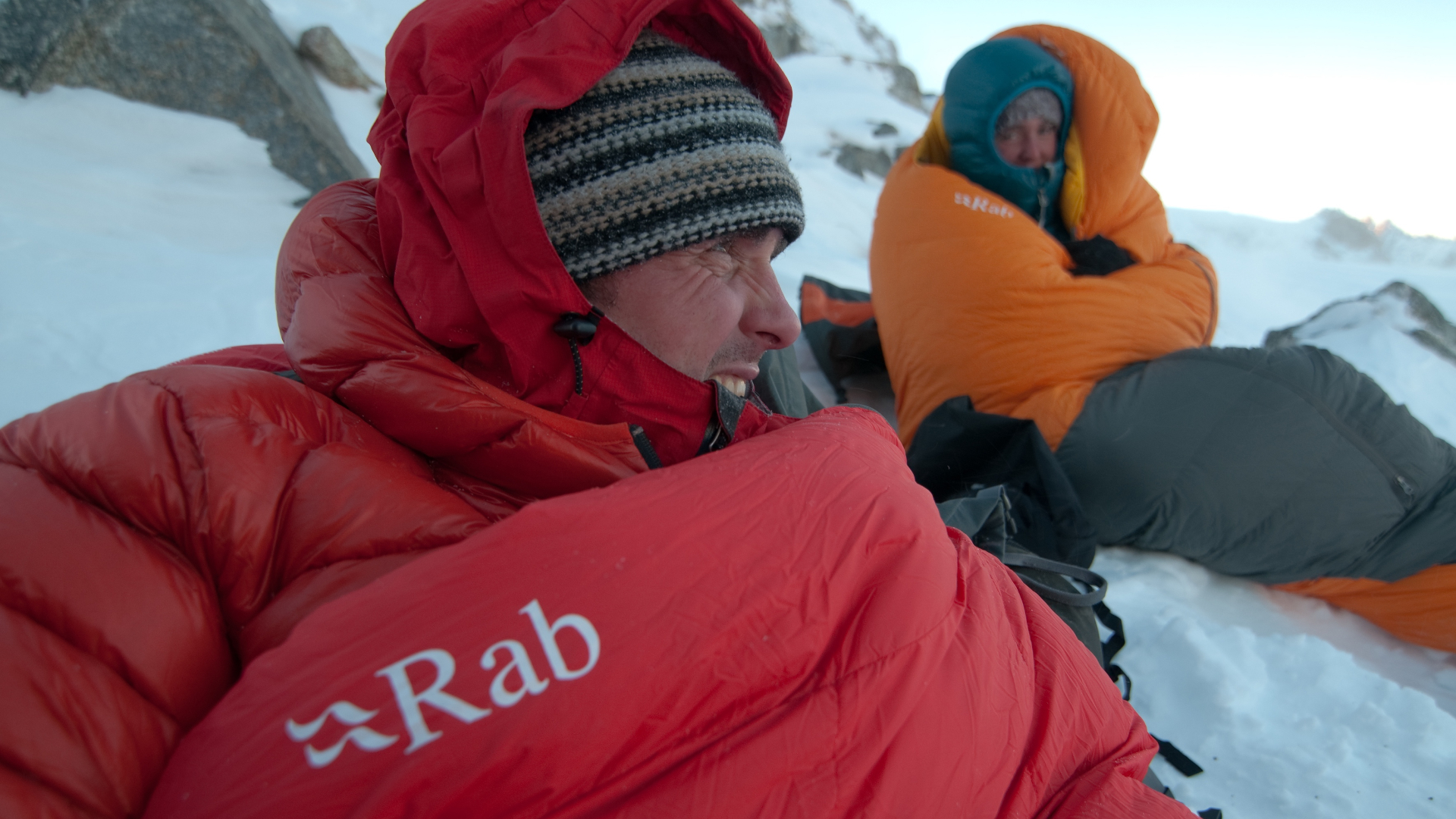
- Higher fill power requires less down to deliver any given warmth
- The higher the down to feather ratio in a down product, the better it will insulate
Why does fill power matter? A higher fill power means that a sleeping bag or jacket requires less down fill to deliver a stated warmth. And less fill equals a lighter product. So, a two-season sleeping bag rated to 0°C (32°F) that uses 700-fill-power down will be lighter than a 0°C bag using 600-fill-power down – assuming the fabrics and other features are the same. But this also means, of course, that when you’re comparing down jackets or sleeping bags, it is important to look at the total fill weight as well as the fill power.
There’s also one other thing to consider: down composition. As noted previously, down is not quite the same as feathers – and feathers are not nearly as good insulators as down clusters. But they all come from the same source, ie geese or ducks. And collecting down without also getting a few feathers in the mix is very tricky. As such, most insulated jackets and sleeping bags will list a down-to-feather ratio in addition to a fill power (FP) figure and a fill weight. The down-to-feather ratio can vary from 70:30 at lower grades (i.e. the fill composition is 70% down and 30% feather) to 90:10 or higher for the best grades of premium down.

- There are lots of types of synthetic fill around but most are made from hollowfibre polyester
- There are broadly two categories when it comes to synthetic products:
- Block insulation is a sheet of wadded synthetic fibers and is used in most sleeping bags
- Loose fill mimics the qualities of down
So, when it comes to down, there’s lots to consider. Surely synthetic insulation is a lot simpler? Well, perhaps a little, though there are still a huge number of different synthetic fills around. These include proprietary materials like Primaloft Gold, Silver and ThermoPlume as well as products from other brands like Thinsulate and also ‘in-house’ fills from the biggest outdoor manufacturers: Patagonia PlumaFill, The North Face’s ThermoBall and Arc’teryx Coreloft, plus a host of others.
Broadly, however, these are all made from hollowfibre polyester. They can also be split into two main categories:
Firstly, there is block insulation, which is essentially a sheet of wadded synthetic fibres (as used in many jackets and almost all synthetic sleeping bags). It is sometimes called continuous filament insulation.
Secondly, there are loose fills, which are silky tufts of synthetic fibres that are closer in terms of their characteristics to natural down. This is often referred to as short staple insulation. The latter can be blown into baffles just like down, resulting in synthetic jackets that look and feel a lot like a conventional down jacket. Good examples include the Montane Icarus and Phoenix ranges of jackets, The North Face’s ThermoBall jackets and Patagonia’s Micro Puff jackets. All are loose fills that offer similar warmth-to-weight as 550 FP down. This isn’t quite as warm as the top synthetic sheet insulations that you find in sleeping bags and heavy belay jackets, but they are far more compressible.
Down vs synthetic jacket verdict:
At the top end of the market, premium down still beats the leading synthetic rivals in terms of warmth to weight. But there are now advanced synthetic fills that can match the insulating value of lower grade (550 to 600 FP) down.
Down vs synthetic insulation: packability
- Down is extremely packable and survives being compressed very well
- It's best not to store them compressed for extended periods though
- Synthetics don't compress as small
- Synthetics also begin to lose their insulating performance after repeated compressions
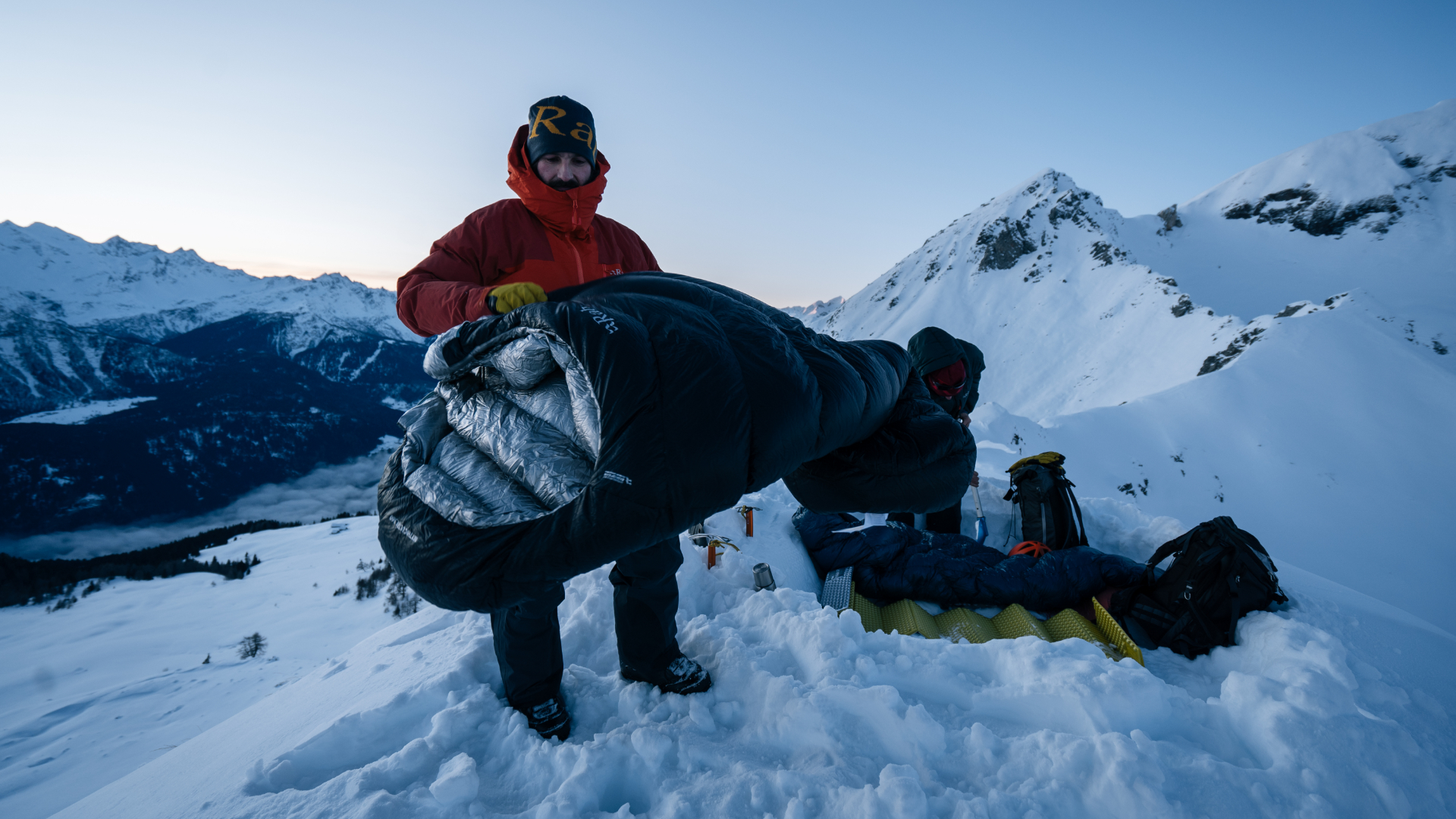
Along with its impressive warmth for weight, down is highly compressible. That makes down jackets and sleeping bags well suited to lightweight backpacking and other adventures where weight and pack space are at a premium.
Generally, down clusters also survive repeated compression well, so your down jacket or sleeping bag ought to retain its loft even after multiple uses – although for optimum results it’s best not to store it compressed when not in regular use. That’s why most premium down sleeping bags are supplied with a larger, breathable mesh or cotton storage sack in addition to a small stuff sack.
Synthetic fills are not as compressible as down. As a result, synthetic insulated jackets and sleeping bags tend to be bulkier than comparable down jackets and bags, though newer loose fills are slightly more packable than synthetic sheet insulation.
Nor do they tend to survive repeated compression as well. As such, you might notice that over time your synthetic jacket or bag does not seem to have quite the same degree of loft – or deliver the same warmth – as it did when new. As with down, the best way to mitigate this is to store your synthetic jacket in a closet or wardrobe rather than rolled up in its hood or tightly bundled in its stuff sack. Similarly, if you have the space, a synthetic sleeping bag will last longer if stored loosely folded rather than kept in its compression sack.
Down vs synthetic jacket verdict Although synthetic loose fills offer improved compressibility over other synthetic sheet insulations, they still cannot match the packability of down. If packed size is a primary consideration for your adventures, a down jacket or sleeping bag will be less bulky than a synthetic alternative.
Down vs synthetic insulation: versatility
- Synthetic insulation performs better than down when wet
- Brands have introduced hydrophobic down to combat this
- However, this still isn't ideal in prolonged wet weather

Here, arguably, is where synthetic insulation has the upper hand over down. Synthetic jackets and sleeping bags are more effective in a wider range of conditions than down products, largely because of their superior wet weather performance.
The traditional Achilles heel of down is that although it is a superb insulator when it is dry, if it becomes saturated, its performance drops off drastically. That’s because sodden down clusters tend to collapse, meaning they can no longer trap warm air. Moreover, saturated down clumps together and takes a long time to dry out, so if it gets wet, it stays wet. That’s not so great if you’re wearing a down jacket in pouring rain or find yourself huddled inside a damp sleeping bag in a wet tent.
In such situations, you’d undoubtedly be better off with a synthetic fill. Hollowfibre polyester is more water-resistant than down, insulates when wet, and is also much faster drying, since the fibres tend to transport or ‘wick’ away moisture better.
To help offset down’s poor wet weather performance, in recent years outdoor brands have started to use hydrophobic down. This refers to down that has been coated to make it absorb less water and/or dry out faster. This is usually a DWR (durable water repellent) treatment similar to that applied to the face fabrics of outdoor clothing. This increases the time that a down product will continue to insulate in damp conditions, but it still doesn’t make down the ideal option for prolonged rainy weather.
Down vs synthetic jacket verdict If it’s very cold but also dry, as in an Alpine environment, then down is a great choice. In cold but wet weather – like a Scottish winter – a synthetic fill is a better option. This means that arguably, synthetic jackets and sleeping bags are slightly more versatile than down alternatives, since even if you get caught in a downpour, you’ll stay fairly warm. That’s still the case despite the emergence of hydrophobic down, although this does mean that a bit of drizzle on your down jacket or moisture in your down sleeping bag is now no longer the hazard that it used to be.
Down vs synthetic insulation: durability
- Synthetic insulation is easier to care for than down insulation
- Down's fine nature can make it escape from seams and the like, leading to down loss
- If well looked after, both are perfectly durable
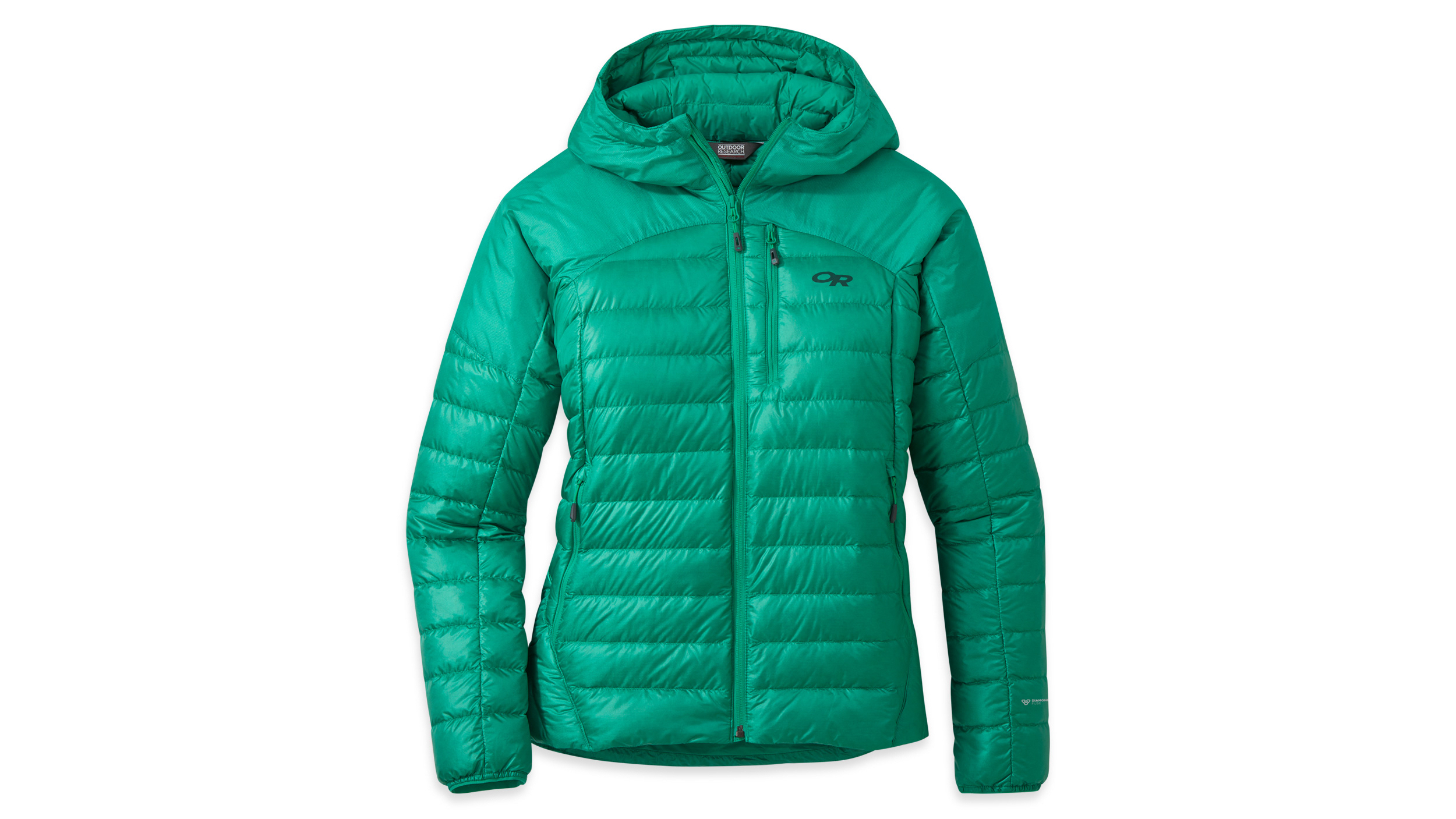
Individual down clusters are very fragile compared to synthetic fibres and are easily clogged with dirt, grease, sweat and body oils, all of which impair performance. As such, knowing how to look after a down jacket or sleeping bag can be a complicated affair. Synthetic insulated jackets or sleeping bags are certainly easier to look after and less susceptible to rough treatment than down. So, if you’re hard on your kit, a down jacket or sleeping bag might not be the best choice.
The very fine nature of down means that it also tends to escape from the seams of jackets and sleeping bags (and can sometimes even work its way through face fabrics). Over time, this can lead to down loss, which will impair loft, since there’s less fill to occupy the internal baffles. Another problem is down migration, which is when the down fill moves around inside the baffles of your jacket or sleeping bag, clumping together in some areas and leaving ‘cold spots’ in other areas. Both issues are less of a problem with synthetic gear, especially with sheet insulations.
On the other hand, if well looked after, down kit can be very durable indeed. With a bit of regular care and maintenance, there’s no reason your down jacket or sleeping bag won’t provide many years of good service.
Down vs synthetic jacket verdict If you’re after fuss-free outdoor kit that can be used and abused, synthetic puffer jackets and sleeping bags are a top choice. If you’re prepared to look after your gear, then a down garment or bag should last you over many years of adventures. It’s worth noting that there are also a number of specialist companies who can rejuvenate old and tired down gear by cleaning and/or ‘topping up’ the down fill inside your jacket or sleeping bag.
Down vs synthetic insulation: sustainability and ethical concern
- Campaigners have highlighted significant animal welfare issues with down in the past
- Brands these days use the Responsible Down Standard or similar to ensure the birds involved are treated humanely
- Down is biodegradable, whereas synthetic insulation is not
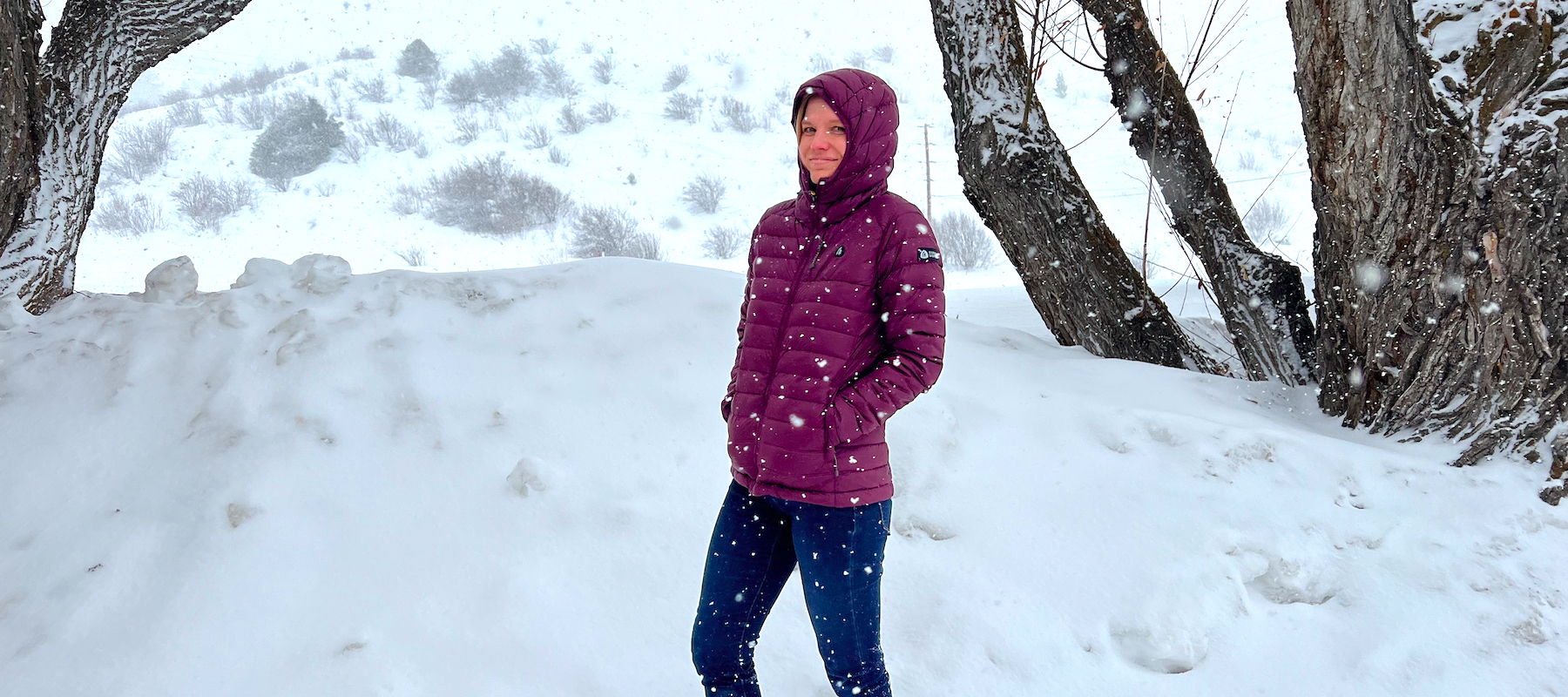
As a natural product derived from ducks and geese, down has its drawbacks. Campaigners have highlighted significant animal welfare issues within the down industry, after it emerged that in some cases wildfowl had been mistreated and even live-plucked for their down. These unethical practices still go on, although increased supply chain transparency as a result of various outdoor industry initiatives have drawn attention to these problems and started to address them.
‘Ethical’ down is occasionally gathered from nesting sites, but this is an expensive and time-consuming method. As such most commercial down is recovered as a by-product of the meat industry, when birds are killed for food. Most reputable brands now use fully traceable down, which is one way to ensure that producers adhere to a set of production welfare standards. One of the pioneers of traceability was Mountain Equipment, with their Down Codex scheme. Other brands use certified down suppliers who are signed up to initiatives such as the Responsible Down Standard, a scheme created by global non-profit organisation The Textile Exchange. The Responsible Down Standard aims to ensure that down and feathers come from animals that have not been subjected to unnecessary harm, incentivising practices that respect the humane treatment of ducks and geese. The standard also provides companies and consumers with a tool to know what is in their products, and to make accurate claims about their origins.
Proponents of down argue that responsibly sourced down can be an environmentally friendly choice for outdoor gear, as it is a natural and biodegradable product that is a by-product of the food industry. Similarly, they argue that it is also renewable and has a lower carbon footprint than oil and petroleum-derived synthetic fabrics, though a comprehensive comparative analysis has not been published.
Basically, if you’re buying a down jacket or sleeping bag, look for evidence that the down has been responsibly sourced. In some cases, down products will have a coded swing tag that allows you to check where, when and how the down in the product was produced.
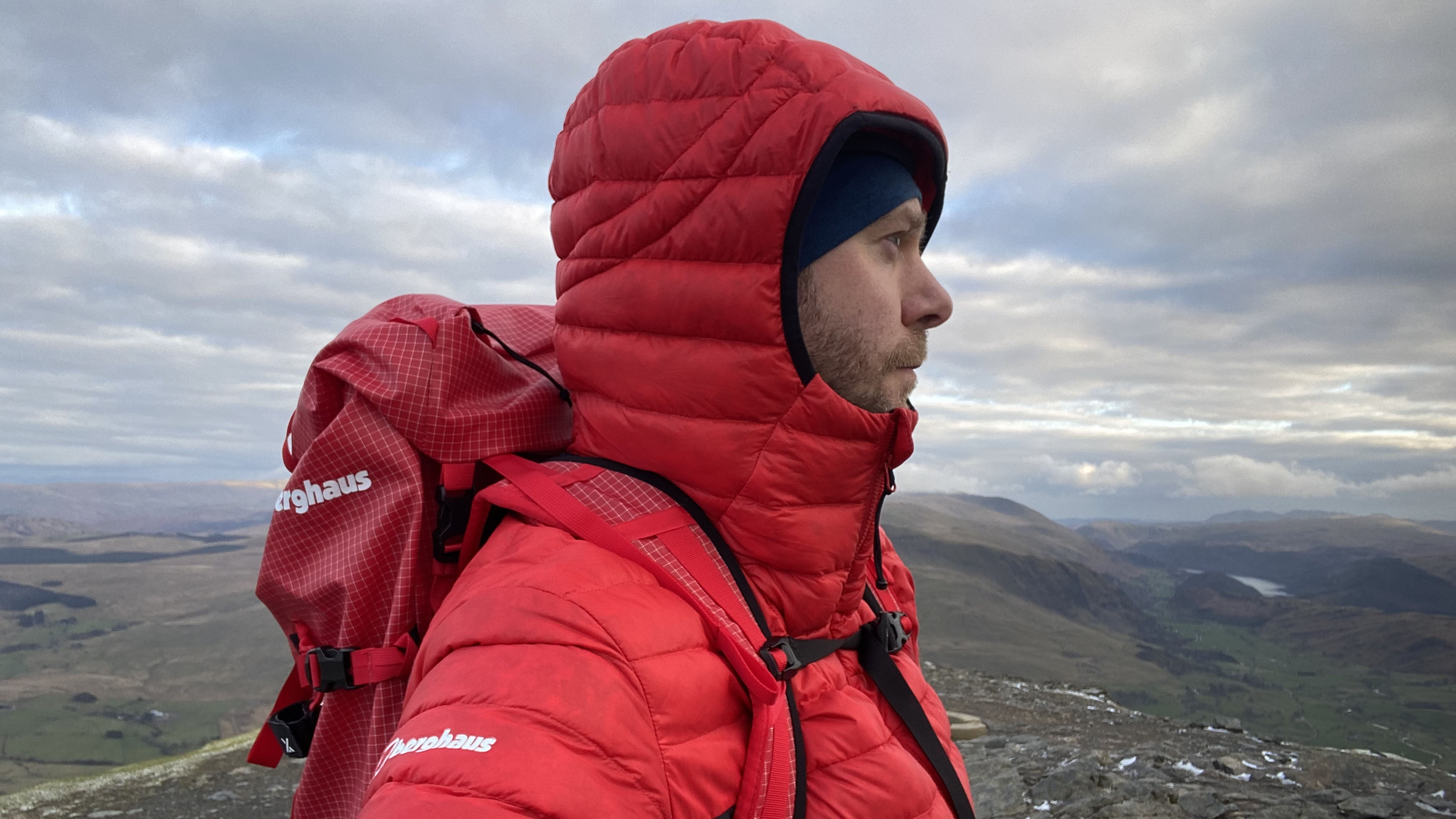
- Most synthetic insulation is made from polyester, which is derived from petrochemicals
- Many brands now use recycled polyester
- As they don't biodegrade, the fibres ultimately end up in our seas and oceans
If this seems a bit of a minefield, you might be tempted to go for a synthetic puffer jacket or sleeping bag instead. But the vast majority of these fills are made from polyester, which is itself derived from petrochemicals, meaning it is not a very environmentally conscious choice either. Fortunately, most brands now use fills made from recycled polyester (in varying degrees – check the label). But this is of course only a partial solution.
A further major criticism of synthetic fibres is that they do not degrade. Unless recycled, they persist in the environment at the end of their lifecycle. In addition, there is evidence that synthetic fabrics can leach microscopic fibres into their surroundings throughout their lifetime, especially when they are washed. Ultimately, these microplastics can end up in our seas and oceans – an issue that is now at the top of the environmental agenda.
Down vs synthetic jacket verdict There’s no clear winner here, as there are pros and cons to both natural down and synthetics. As ever, the consumer has the power – if you’re considering buying a down jacket or sleeping bag, ensure the down is responsibly sourced. If you’re looking at synthetics, check for recycled content in the insulation.
Down vs synthetic insulation: price
- Down fill is almost always more expensive than synthetic fill
- High quality synthetic options are best for those on a budget
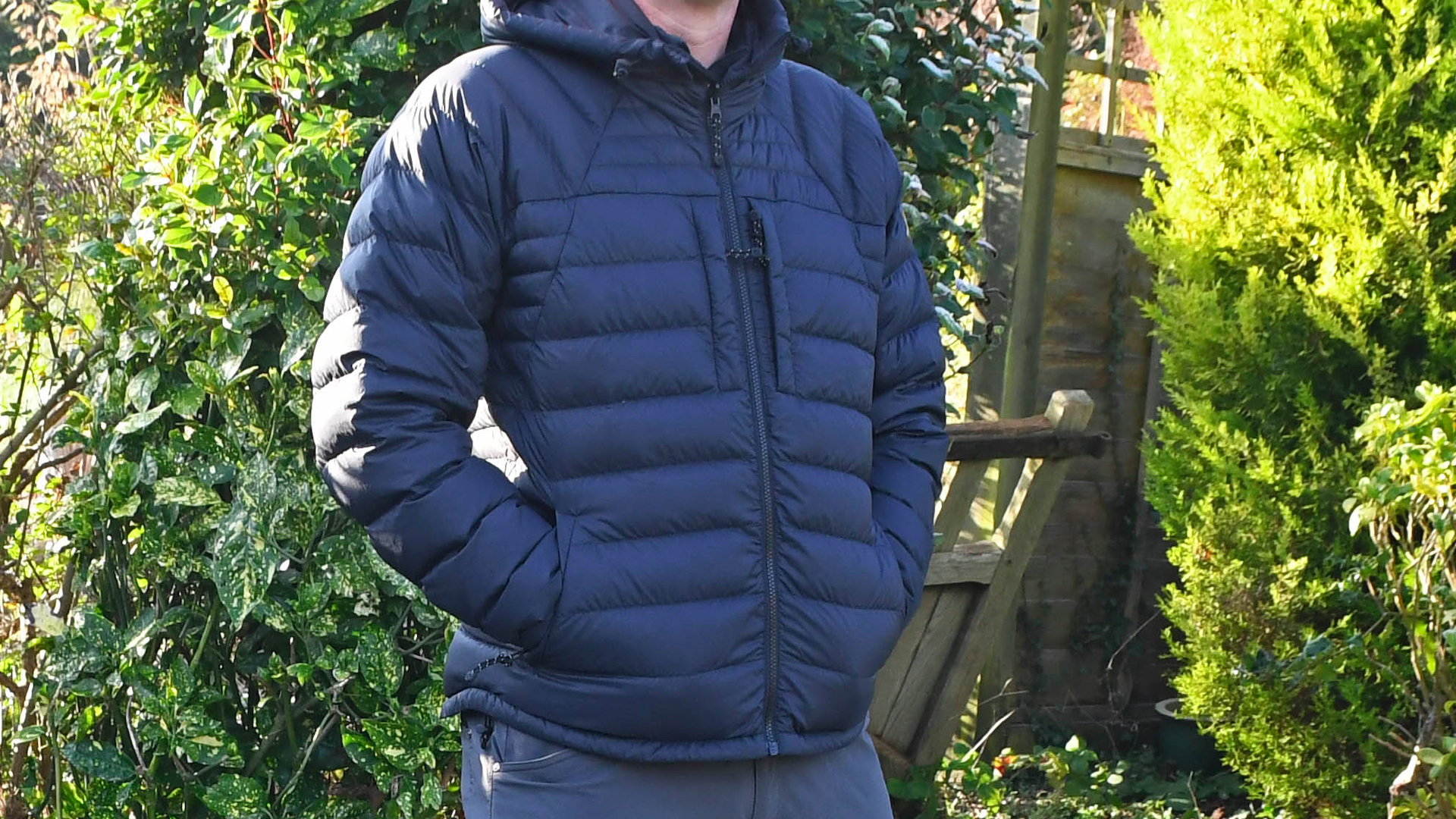
When it comes to outdoor kit, down fill is almost always more expensive than synthetic fill – and that’s true whether you’re shopping for a puffer jacket or a sleeping bag. For example, a four-season down sleeping bag can easily cost upwards of $500/£500, while a box-wall baffled down jacket is likely to set you back at least $250/£250. You can find cheap down goods, but these have their own drawbacks – not just in terms of quality but also in terms of dubious ethical and animal welfare standards. High-quality synthetic alternatives are a better choice for those on a budget.
Down vs synthetic jacket verdict When it comes to the price tag, synthetic fills are almost always cheaper than down fills. Lifetime value is a little harder to quantify, since the high initial outlay of a down jacket or sleeping bag can often be offset against the years of good service it ought to deliver.
Comparison table
| Header Cell - Column 0 | Down insulation | Synthetic insulation |
|---|---|---|
| Warmth for weight | Up to 1000 FP | Up to 600 FP |
| Packability | Highly compressable | Not as compressable |
| Versatility | Good for cold, dry conditions | Good for cold, dry and wet conditions |
| Durability | Requires more care | Very durable |
| Sustainability | Animal welfare issues | Often derived from petrochemicals, don't biodegrade |
| Price | Expensive | Budget-friendly |
Down vs synthetic insulation: the verdict
It’s close run thing – whereas down has the edge when it comes to warmth for weight and packability, synthetic fills are cheaper, easier to look after and arguably more versatile, given their superior wet weather performance. It’s hard to pick a clear winner when it comes to considerations such as sustainability, durability or value, as much depends on the footprint of an individual product and how well it is looked after during its effective lifespan.
Ultimately, your choice should reflect the activities and conditions in which you’re likely to be using your puffer jacket or sleeping bag. If warmth, weight and packed size are vital, then down is likely to win out. On the other hand, if you’re adventuring in wet and wild conditions or are on a budget, then a synthetic piece should serve you well.
An outdoors writer and editor, Matt Jones has been testing kit in the field for nearly a decade. Having worked for both the Ramblers and the Scouts, he knows one or two things about walking and camping, and loves all things adventure, particularly long-distance backpacking, wild camping and climbing mountains – especially in Wales. He’s based in Snowdonia and last year thru-hiked the Cambrian Way, which runs for 298 miles from Cardiff to Conwy, with a total ascent of 73,700 feet – that’s nearly 2½ times the height of Everest. Follow Matt on Instagram and Twitter.

